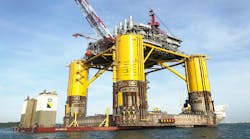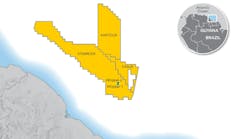Offshore staff
OSLO, Norway – Petroleum Safety Authority Norway (PSA) has rejected BP’s request to extend the operating life of the Valhall field quarters platform (QP) in the North Sea until Dec. 31, 2017.
The current consent expires at the end of this month.
PSA says it identified uncertainties in the analyses presented by BP as a basis for extending the platform’s operating life.
Valhall QP entered service in 1980, and was originally expected to remain operating for 20 years.BP had applied for consent to extend the operating life three times previously, all of which were sanctioned.
But PSA points out that these applications were primarily justified by the need for accommodation capacity on the field until the new Valhall PH process and hotel platform became operational in January 2013, and for preparing/executing well work on Valhall DP.
Over time, oil and gas production has led to the Valhall reservoir becoming compressed and the seabed underneath has subsided. This means that the base of the topsides on Valhall QP is nearer the sea surface than before, and therefore no longer satisfies the air-gap requirements.
PSA adds that Valhall QP does not meet requirements for surviving a 100-year wave in occupied condition. BP therefore has procedures in place for de-manning when high waves are forecast.
After Dec. 31, 2017, the company wanted to use Valhall QP as an “end platform” for escape and evacuation until it goes out of service.
It also sought to continue operating the facility with a de-staffing procedure for high waves, and to shut it down between Dec. 20 and Feb. 15, the period when high waves in the area are most frequent.
PSA commissioned consultants from Sintef, Marintek, the Norwegian University of Science and Technology (NTNU) to examine the scenarios, and has passed their findings to BP.
In PSA’s view, BP has underestimated the height of the 100-year wave crest and the associated wave loads. Additionally, it claims, the company’s analyses assume that the wave forms are symmetrical, whereas in reality they are asymmetrical where their crests are displaced in the direction of wave motion. This account for the increased wave loads.
PSA also considers BP’s analysis method inadequate – a combination of ultimate limit state (ULS) and accident limit state (ALS), where ULS loads are analyzed in relation to the requirements for ALS.
12/19/2014




